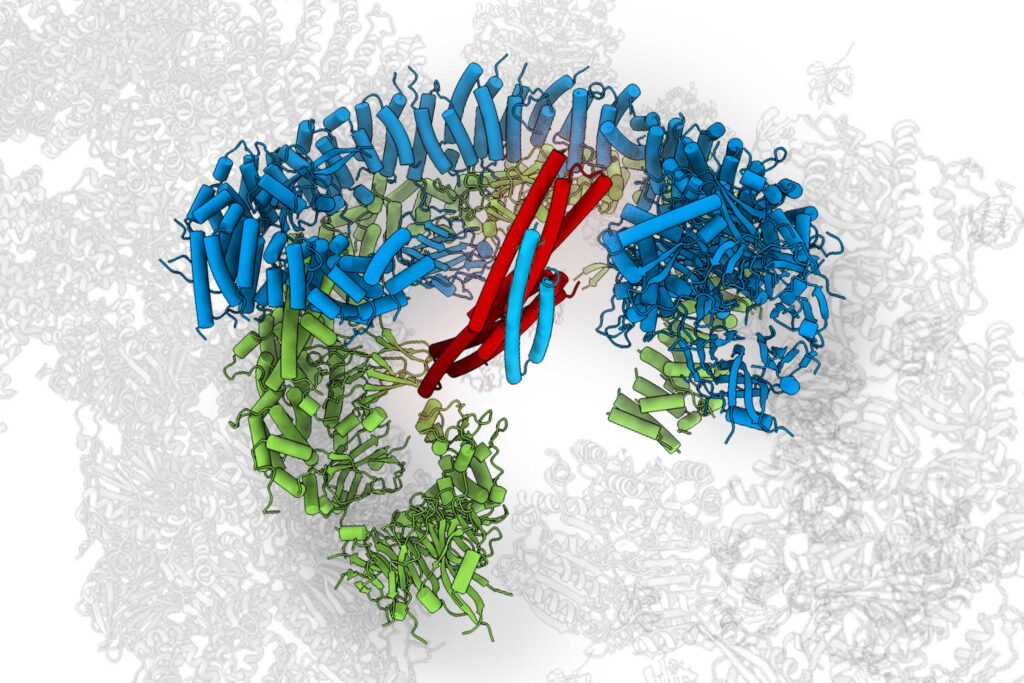February 9, 2023
Structural basis for regulation of apoptosis and autophagy by the BIRC6/SMAC complex
The enormous protein BIRC6 plays an important role in preventing programmed cell death – earning BIRC6 the nickname “Guardian of the Cell”. Scientists from the lab of Tim Clausen at the IMP now showed that BIRC6’s structure holds the key for regulating cell death, but also for cell survival pathways. Their findings are published in the journal Science.
During an organism’s healthy development but also during times of stress and pathology, surplus or damaged cells are eliminated by programmed cell death, also called apoptosis. When the molecular pathways that control apoptosis go haywire, diseases such as cancer can occur. In healthy systems, a class of proteins called Inhibitor of Apoptosis Proteins (IAPs) prevent this by blocking enzymes without which apoptosis cannot happen. BIRC6 is one of these IAPs, and so important for preventing self-destruction of the cell that it is nicknamed the “Guardian of the Cell”.
At a weight of one megadalton, the BIRC6 dimer is enormous – one of the larges known enzymes in human cells. So huge, in fact, that scientists were long unable to determine its structure. Traditionally, molecular structures were determined by X-ray crystallography, a technique for which the protein in question needs to be purified, turned into a crystal, and irradiated with high-energy beams. The resulting radiation patters would provide clues on the structure of the protein. However, this requires proteins to be small and robust –enormous BIRC6 was far off limits.
Scientists from the lab of Tim Clausen instead turned to a different technology, one that has recently pushed the boundaries of its resolution to new levels: cryo-electron microscopy. In spring 2022, a KRIOS G4 cryo-Electron Microscope was installed at the IMP. The state-of-the-art device provided the vital boost to the BIRC6 project: the scientists quickly accumulated structural data that allowed the detailed characterisation of the entire protein. While knowing the structure of BIRC6 marks a significant milestone in itself, the study now published in Science goes far beyond.
Read the full story in the IMP News here.
Publication:
Julian F. Ehrmann, Daniel B. Grabarczyk, Maria Heinke, Luiza Deszcz, Robert Kurzbauer, Otto Hudecz, Alexandra Shulkina, Rebeca Gogova, Anton Meinhart, Gijs A. Versteeg, Tim Clausen (2023):
Structural basis for regulation of apoptosis and autophagy by the BIRC6/SMAC complex
Science. 2023 February 9.

BIRC6 (shades of blue and green) and SMAC (red). Shown is the BIRC6 dimer, with one protomer in green, one in blue, as well as SMAC in red. The structure in light blue at the front is from the blue BIRC6 protomer. (© IMP / Julian F. Ehrmann et al.)